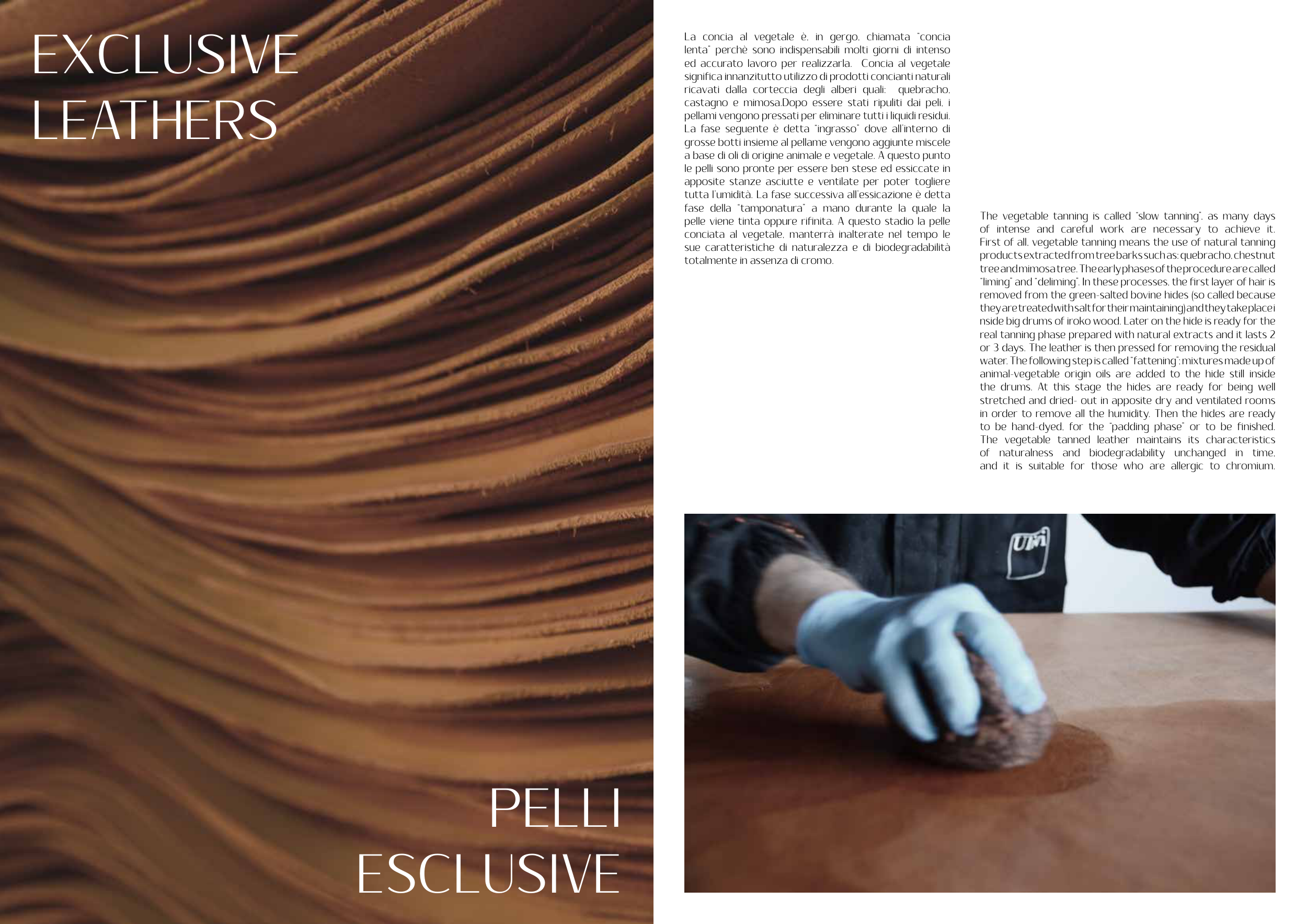EXCLUSIVE
LEATHERS
PELLI
ESCLUSIVE
The vegetable tanning is called “slow tanning”, as many days
of intense and careful work are necessary to achieve it.
First of all, vegetable tanning means the use of natural tanning
products extracted from tree barks such as: quebracho, chestnut
tree and mimosa tree. The early phases of the procedure are called
“liming” and “deliming”. In these processes, the first layer of hair is
removed from the green-salted bovine hides (so called because
they are treated with salt for their maintaining) and they take place i
nside big drums of iroko wood. Later on the hide is ready for the
real tanning phase prepared with natural extracts and it lasts 2
or 3 days. The leather is then pressed for removing the residual
water. The following step is called “fattening”; mixtures made up of
animal-vegetable origin oils are added to the hide still inside
the drums. At this stage the hides are ready for being well
stretched and dried- out in apposite dry and ventilated rooms
in order to remove all the humidity. Then the hides are ready
to be hand-dyed, for the “padding phase” or to be finished.
The vegetable tanned leather maintains its characteristics
of naturalness and biodegradability unchanged in time,
and it is suitable for those who are allergic to chromium.
La concia al vegetale è, in gergo, chiamata “concia
lenta” perchè sono indispensabili molti giorni di intenso
ed accurato lavoro per realizzarla. Concia al vegetale
significa innanzitutto utilizzo di prodotti concianti naturali
ricavati dalla corteccia degli alberi quali: quebracho,
castagno e mimosa.Dopo essere stati ripuliti dai peli, i
pellami vengono pressati per eliminare tutti i liquidi residui.
La fase seguente è detta “ingrasso” dove all’interno di
grosse botti insieme al pellame vengono aggiunte miscele
a base di oli di origine animale e vegetale. A questo punto
le pelli sono pronte per essere ben stese ed essiccate in
apposite stanze asciutte e ventilate per poter togliere
tutta l’umidità. La fase successiva all’essicazione è detta
fase della “tamponatura” a mano durante la quale la
pelle viene tinta oppure rifinita. A questo stadio la pelle
conciata al vegetale, manterrà inalterate nel tempo le
sue caratteristiche di naturalezza e di biodegradabilità
totalmente in assenza di cromo.


